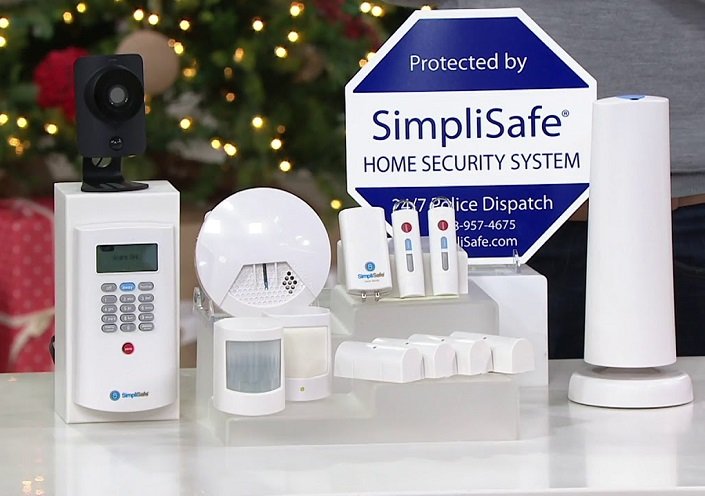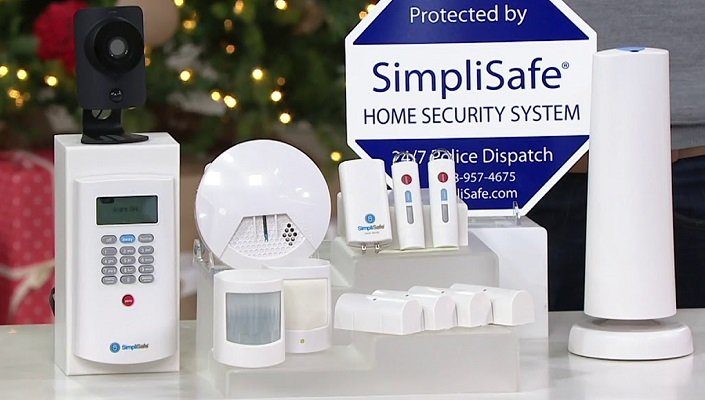
SimpliSafe makes security pretty approachable for beginners. Their systems are basically “plug and play,” but the warranty comes with fine print that can catch you off guard if you’re not careful. Little things—like using a non-approved battery, cracking open the keypad to mess with the code, or buying a remote from a sketchy third-party seller—can cause real trouble. If you want peace of mind (and coverage for those random “uh-oh” moments), it pays to know what will void your SimpliSafe warranty and how to avoid it.
Let me break down the most common mistakes and what you should do instead, so you can keep your system within warranty. No legalese or heavy tech talk—just straightforward advice, like sharing a checklist with a friend.
Understanding What the SimpliSafe Warranty Covers
Before you worry about voiding anything, you need to know what the SimpliSafe warranty actually protects. The brand’s warranty has your back for **manufacturing defects or hardware failures**—basically, if something stops working through no fault of your own. Usually, this lasts for three years after purchase, though terms sometimes vary depending on where you bought your system or if you registered it.
Here’s the thing: warranties aren’t a safety net for *every* issue. They don’t cover problems from accidents, water damage, or if your dog decides the keypad is a chew toy. The same goes for user errors. If you tinker with the code of a sensor, use unauthorized batteries, or try to reset the system with the wrong steps, SimpliSafe can say “sorry—not covered.”
Tip: Always read the warranty booklet included in the box. I know, it’s about as exciting as a terms-of-service page, but it’s where SimpliSafe spells out the do’s and don’ts. If you ever feel lost, double-check on SimpliSafe’s official website. Their customer support can help clear up what’s covered—sometimes with more empathy than you’d expect from a security tech company.
Don’t Open or Modify Your SimpliSafe Devices
It’s tempting to try basic troubleshooting if your system’s acting up—or maybe you’re just curious about what’s inside that beeping siren. However, this is where a lot of people accidentally void their SimpliSafe warranty without realizing it.
Here’s the big rule: **Never open, modify, or tamper with the internal components of SimpliSafe devices.**
- That means no swapping out circuit boards, hacking the code, or soldering loose wires.
- Even trying to “fix” a sticky keypad or pair a remote by poking around inside can flag your system as ineligible for warranty support.
- If you’re ever troubleshooting an issue, stick to steps in SimpliSafe’s official guides—don’t go off-script with DIY repairs.
Let me put it this way: if you were renting an apartment, would you break down a wall to investigate a leak? Probably not. Treat your SimpliSafe system the same way. If something seems off, contact support or use the app to run diagnostics.
Short story: I once heard from a neighbor who tried to “upgrade” his siren by rewiring it for a louder blast. Not only did the siren stop working, but SimpliSafe refused to cover it, since it was “tampered with.” Lesson learned: if you’re not sure, don’t touch.
Always Use Approved Accessories and Replacement Parts
You might be wondering: can you save money by buying a cheaper remote or generic battery on Amazon? Here’s where things get tricky. SimpliSafe’s warranty requires you to use **only official accessories and approved replacement parts** with your system.
- That means batteries, remotes, sensors, and keypads all need to be genuine SimpliSafe products or, at minimum, parts specifically listed as compatible in their documentation.
- Swapping in a generic battery or trying to reset a sensor with a third-party remote can cause malfunctions, and SimpliSafe may point to your non-approved part as the reason for the trouble.
Why does this matter? Security devices are finicky. Even a battery that’s “almost” the right voltage can short out a sensor or cause false alarms. It’s a bit like using the wrong spark plug in your car—it might start, but odds are good you’ll have engine trouble sooner or later.
Tip: If you’re unsure, buy replacements directly from SimpliSafe or a verified retailer. And double-check the packaging—terms like “universal” or “compatible with most brands” often mean “not covered by warranty.”
Follow the Official Setup, Sync, and Pairing Steps
It might feel like anyone can pair a remote or reset a sensor, but skipping or improvising setup steps is one of the sneakiest ways to void your SimpliSafe warranty. The company expects you to use their **official installation and pairing instructions**, not shortcuts found on random forums.
Here’s what to keep in mind:
- Pairing new devices? Use the SimpliSafe app or documented steps in the product guide—no creative “workarounds.”
- If you need to reset your system, follow SimpliSafe’s directions to the letter.
- Attempting to “sync” with off-brand software or using a universal remote to code a sensor usually lands you in hot water warranty-wise.
Why so strict? SimpliSafe designs each device to pair and communicate in a locked-down way for security reasons. Messing with the code, resetting using third-party tools, or forcing a connection with an unauthorized device could make your whole system unreliable—or vulnerable to hacks.
If you’re ever stuck during setup, resist the urge to mash buttons or hunt for unsanctioned hacks. Take a breath, pull up the official support resources, and, if all else fails, call their helpline. Their team is usually happy to walk you through step by step.
Register Your SimpliSafe System and Keep Proof of Purchase
Here’s a simple move that saves so much heartache: **register your SimpliSafe system as soon as you get it** and keep your proof of purchase somewhere safe. It’s easy to overlook this step when you’re excited to get things up and running, but skipping registration can make warranty claims a nightmare.
- Within the SimpliSafe app or on their website, it only takes a few minutes to register your serial number, set up your account, and begin coverage.
- If you ever need to troubleshoot, replace, or return something, customer service will almost always ask for your account info and proof you bought the device from an authorized retailer.
Why bother? If your system isn’t registered, SimpliSafe can question whether you’re the original owner or if the system was purchased secondhand. Some folks even find that third-party sellers on marketplaces (like eBay or Facebook Marketplace) offer systems without warranty at all, since coverage is non-transferrable.
Tip: Email yourself a digital copy of your receipt, or snap a quick photo and store it in your phone’s favorites. A little organization goes a long way if you ever need to prove your system is legit.
Handle System Updates and Maintenance the Right Way
Your SimpliSafe system is like a little robot guard for your home—it needs updates and regular check-ups to work right. But, did you know that **ignoring official updates or performing unauthorized maintenance** can also void your warranty?
- System updates usually come through the app or official channels. If you skip them, your devices might fall out of sync or stop working as designed.
- Never attempt to “force” an update using any code or USB stick, unless the instructions come straight from SimpliSafe.
- If a sensor battery dies, swap it per SimpliSafe’s guidelines and only use the brand and size they recommend. Mixing in the wrong battery—even if it fits—can cause trouble with warranty coverage.
Here’s the thing: Sometimes home tinkerers will try to push through an update or manually reset their base station. Unless SimpliSafe’s customer support walks you through it, these kinds of troubleshooting steps are risky. Keeping your system up to date is crucial, but only if you follow the process in your user manual or within their app.
Use SimpliSafe’s Official Support for Troubleshooting
When something goes wrong, your first instinct might be to visit online forums, Reddit threads, or YouTube for a quick fix. While it’s understandable, **using unofficial troubleshooting advice or third-party repair services** can cause you to lose your SimpliSafe warranty protection.
- If you ever run into problems with pairing, syncing, or resetting devices, open a ticket with SimpliSafe support or reach out through their helpline, instead of letting a non-authorized tech mess with your system.
- Never give out your device’s code to someone who isn’t with SimpliSafe support.
- Stick to solutions that come straight from SimpliSafe’s documentation or their vetted customer help team.
Honestly, I get the appeal of saving time with a quick Google search. But remember: if a third-party “fix” goes wrong and something breaks, SimpliSafe’s warranty won’t cover repairs or replacements. It’s smarter (and safer) to play by the rules and keep your system, and your warranty, intact.
Pro insight:
Most warranty voids happen from well-intentioned troubleshooting. If you’re stuck, the official support team is usually kinder—and more helpful—than you’d expect.
Be Cautious Buying Used or Refurbished SimpliSafe Systems
You might spot a tempting deal on a used SimpliSafe system online, but here’s what many folks don’t realize: **warranties rarely transfer to new owners**, and buying from non-approved sellers can leave you uncovered.
- SimpliSafe’s warranty applies only to the original purchaser, with proof of purchase from an authorized seller.
- Refurbished or “open box” systems sold by third parties often lack warranty coverage, even if the hardware looks new.
- If a system is registered to someone else, SimpliSafe can’t transfer warranty support or let you pair new devices without the original account info.
This isn’t meant to scare you away from a good bargain, but to help you understand the risks. If budget is tight, SimpliSafe sometimes offers discounted systems and certified refurbished units themselves. Those *are* covered by warranty—and customer support will back you up if things go wrong.
If you already bought a used system, check with SimpliSafe support to see if any warranty coverage applies. In most cases, though, it’s better to buy new (or certified refurbished) directly from the source.
The Bottom Line: Keep Your Security and Warranty Safe
Keeping your SimpliSafe warranty valid isn’t painful—it just takes a bit of patience and a “when in doubt, don’t improvise” mindset. Remember to stick with official accessories, never pry open devices, and always lean on SimpliSafe support for troubleshooting, setup, or sync issues. Register your system, keep your receipts, and pass on those too-good-to-be-true used deals if you care about coverage.
Honestly, your home security system is too important (and too expensive) to risk for a shortcut. By following the steps above, you won’t just avoid voiding your SimpliSafe security systems warranty—you’ll also keep your devices working smoothly, so you can relax knowing your home’s protected, and your coverage is too.
